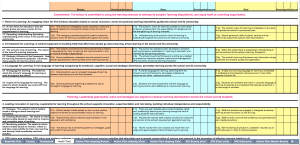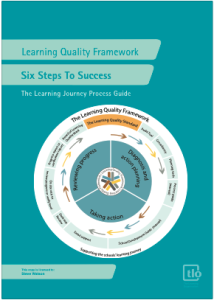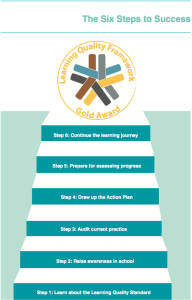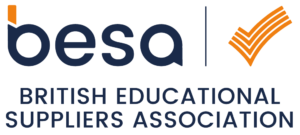The first phase of using LQF involves gaining a feel for the framework, bringing people on board, diagnosing current practice and drawing up an organisation deep action plan. The supporting materials and consultancy helps the school to:
- understand the deeper meaning behind the words of the Standard’s principles and indicators, and how they play out in practice
- understand the threads of activity that work together to form a learning school, and their stages of development
- gain a picture of the school’s current practice in relation to the indicator levels
- plan how, where and when development action could be put into place
- self-assess whether a stage of the journey is established and secure in the school
- make best use of the external review and verification processes and the resulting report.
The initial support package:
The initial support package covers diagnosing current practice and planning action to achieve a level of the standard. The materials consist of:
- The full Learning Quality Standard printed and laminated in A4 format.
- The School Development Guide. A 120-page guide that unpacks the framework’s structure, principles and indicators at three levels of development and gives detailed guidance on how you might achieve them. It also contains a full version of the Learning Quality Framework. One printed copy.
- A process guide entitled Six Steps to Success;one printed copy. This accessible 90-page guide gives information that you can use to:
- understand the LQF
- raise awareness in the school
- audit current practice
- draw up an action plan
- prepare for an external review of progress
- continue the learning journey.
- The LQF Audit spreadsheet tool.
- Two electronic action planning tools
- A half-day consultancy to ensure accurate action planning against a level of the standard.
The Audit Tool
The first substantial activity in using the LQF is to audit current practice using the electronic Audit Tool. This tool invites you to consider the whole standard and identify statements of practice you think to be secure. This gives you a sense of the breadth and depth of your strengths against the Standard.
Consultancy
Training and consultancy is available to help you along the journey.
The Planning Tools
 The Action Plan Shaping Tool is designed to get you closer to an Action Plan. It focuses on the level of the standard you wish to work on, identifies specific further help, and prompts you to cluster actions together into a manageable number of action projects
The Action Plan Shaping Tool is designed to get you closer to an Action Plan. It focuses on the level of the standard you wish to work on, identifies specific further help, and prompts you to cluster actions together into a manageable number of action projects
The Action Plan Master Tool is a key document because it structures the school’s initial self-diagnosis, guides development work, records progress and, later, becomes a central document for self or external review.
The tool is presented as a personalised spreadsheet containing all the indicators of the standard together with their evidence requirements.
By considering each indicator and recording what is in place the process will:
- reveal the school’s strengths and areas for development
- give a detailed self-evaluative summary of the school’s provision
- provide the school with a development agenda linked to a level of the standard.
Six Steps to Success: The Learning Journey Process guide
 The purpose of the process guide, entitled Six Steps to Success, is to help the school understand and move through the LQF process; assisting you to have a successful Learning Quality Framework experience.
The purpose of the process guide, entitled Six Steps to Success, is to help the school understand and move through the LQF process; assisting you to have a successful Learning Quality Framework experience.
The Process Guide covers the following steps:
- Learning more about the LQF
- how the Framework fits together
- what the levels are about
- how it links with other standards.
- Raising awareness in school
- here we learn from schools that have piloted the LQF – what they have found essential in leading the school through the culture change described in the LQF
- Auditing current practice

- guidance on the best way to complete the Audit Tool and using the results to plan further action.
- drawing up an Action Plan
- clustering framework indicators together to form action projects
- sequencing action and integrating it into the schools’ strategic plan
- Preparing for an external review or verification
- making sure you know how things are working in the school
- completing a Level Assessment Chart
- planning the on-site visit to best effect
- Continuing the learning journey
- celebrating your achievement
- making best use of the review or verification report
- re-auditing your practice
- developing a next level Action Plan
[button link=”?page_id=1351″]next: Phase 2: Taking Action[/button]
